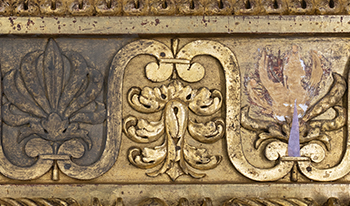
This paper will present the story of a collaborative project between the Imaging Department and the Paintings Conservation Department of the Metropolitan Museum of Art to use 3D imaging technology to restore missing and broken elements of an intricately carved giltwood frame from the late 18th century.

The geometry comparison is promising for the deformation assessment of cultural heritage (CH) surfaces over the decade. In this work, the potential reliability of the developed changed-based segmentation method was explored in quantifying the deformation on an object. The proposed method was tested using two parts of a single model, considering one ideal in shape and the other part is deformed over time. This study explains how deformation using changed-based segmentation can be identified successfully with millimeter level accuracy in the measurement and inform future conservation treatment. The method is insensitive to the noise of surfaces and the cross-time alignment of two models with a known reference of no change. The technique allows identifying the deterioration based on deformation detection with clear colormap visualization and its significance as a preventive measure without using a physical marker as a reference. The threshold values were fed to the method based on the known respect of no change and quantified as minor and major based on the object's size. The presented result in this paper suggests that the method can be effectively used to enhance 3D documentation of monitoring both indoor and outdoor environments and perform preventive interventions irrespective of the object's size.